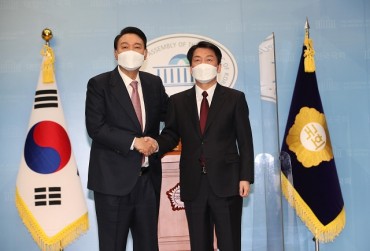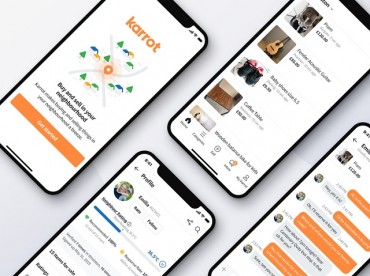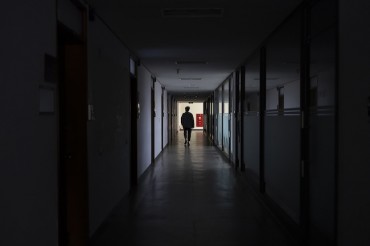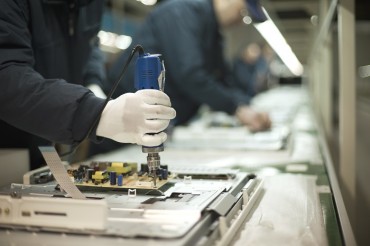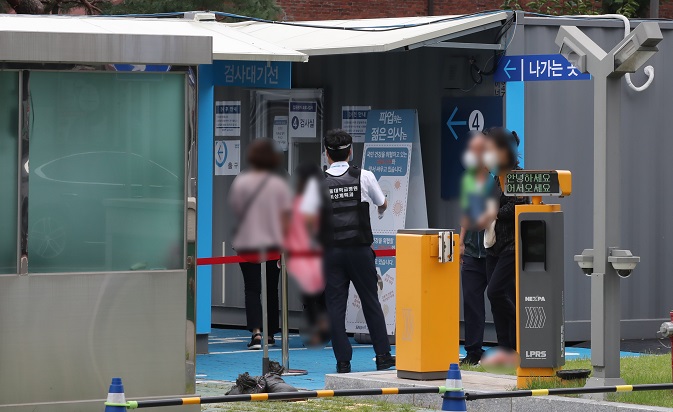
Citizens wait to receive virus tests at a COVID-19 screening clinic in Seoul on Sept. 6, 2020. (Yonhap)
SEOUL, Sept. 6 (Korea Bizwire) — South Korea reported 167 cases of the coronavirus on Sunday, marking the fourth straight day of under 200 new infections, though health authorities remain vigilant over sporadic cluster outbreaks.
Of the total, 152 were local infections and a majority of them came from the greater Seoul area, including 63 in Seoul and 45 in the surrounding Gyeonggi Province.
Incheon, west of Seoul, also reported nine cases, according to the Korea Centers for Disease Control and Prevention (KCDC).
The country’s total caseload rose to 21,177.
South Korea has been posting triple-digit rises in COVID-19 cases for more than three weeks due to cluster infections mostly tied to a slew of churches and an anti-government rally in central Seoul in mid-August.
After keeping the new cases of COVID-19 in double-digit figures for more than five months, South Korea added more than 100 cases on Aug. 14 before the number shot up to 441 on Aug. 27. It then fell below 300 last Sunday.
Other major municipalities also reported additional infections, with the southwestern city of Gwangju adding seven cases and the central city of Daejeon confirming five more cases.
So far, 1,162 cases have been traced to the Sarang Jeil Church in northern Seoul — a hotbed of the recent spike in new infections.
The church-linked cases also led to infections in at least 27 locations, with 84 cases reported in 10 different provinces and municipalities outside the greater Seoul area.
Also 527 patients have been reported from the Aug. 15 demonstration in central Seoul, with 267 cases identified in 11 different provinces and municipalities outside the greater Seoul area.
The number of cases tied to a credit card issuing company, also in Dongjak Ward, southern Seoul, increased to 41, while 16 infections have been identified at a call center in Gangdong Ward, eastern Seoul.
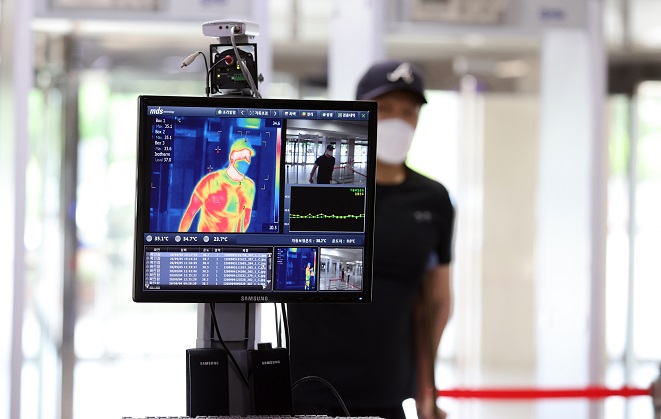
This photo taken on Sept. 6, 2020, shows a thermal imaging camera at an entrance of the National Assembly in Seoul. (Yonhap)
South Korea on Friday announced that it decided to extend tougher anti-virus curbs on restaurants, bakeries and coffee shops in the greater Seoul area for another week, as sporadic cluster infections and untraceable cases still loom.
Since last Sunday, the country has been limiting operations of restaurants, bakeries and franchise coffee chains in the Seoul metropolitan area under the so-called Level 2.5 social distancing guidelines, while implementing Level 2 measures across the country since mid-August.
Health authorities said strengthened antivirus measures are starting to have a positive impact on the country’s virus situation. The daily average of new virus cases stood at 218 over the past week, down from 331 a week ago.
However, authorities warned against complacency and urged people to follow virus prevention guidelines, especially on the upcoming Chuseok holidays.
This year’s Chuseok holidays fall between Sept. 30 and Oct. 4. The Korean autumn harvest celebration is one of the country’s biggest traditional holidays and serves as a chance for family members to get together.
“There is a high possibility of people contracting the virus through their family meetings, so we advise people to stay at home during this Chuseok holiday,” Sohn Young-rae, a senior health official said.”
The number of newly identified imported cases stood at 15, with six of them coming from the Philippines. The country’s total number of imported cases is now at 2,892.
South Korea reported one more death from the coronavirus, raising the death toll to 334. The country’s virus fatality rate is now at 1.58 percent.
But the country could experience more deaths from the virus as the number of critically ill COVID-19 patients reached 163, up four from a day earlier.
The total number of people released from quarantine after making full recoveries stood at 16,146, up 137 from the previous day, with 4,697 people isolated for COVID-19 treatment, up 29 from a day ago.
(Yonhap)



